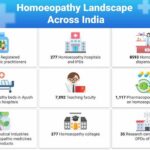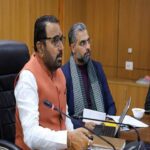The Cabinet has approved the National Health Policy 2017. Itis a huge milestone in the history of health sector in the country. The Health Ministry has formulated the National Health Policy 2017, under the guidance of the Hon. Prime Minister Shri Narendra Modiji. The last National Health Policy was framed in 2002. So, this policy has come after a gap of 15 years to address the current and emerging challenges necessitated by the changing socio-economic, technological and epidemiological landscape.
The Government of India adopted a highly participative and consultative approach in policy formulation process. The Draft National Health Policy was placed it public domain on 30th December, 2014. Over 5000 suggestions were received. This was followed by consultations with the State Governments and other stakeholders for further fine tuning of the policy. The policy was placed before the Central Council for Health & Family Welfare, the apex policy making body and was unanimously endorsed by it.
The policy informs and prioritizes the role of the Government in shaping health systems in all its dimensions- investment in health, organization and financing of healthcare services, prevention of diseases and promotion of good health through cross-sectoral action, access to technologies, developing human resources, encouraging medical pluralism, building the knowledge base required for better health, financial protection strategies and regulation and progressive assurance for health. The policy is aimed at reaching healthcare in an assured manner to all, particularly the underserved and underprivileged.
The policy aims for attainment of the highest possible level of health and well-being for all at all ages, through a preventive and promotive health care orientation in all developmental policies, and universal access to good quality health care services without anyone having to face financial hardship as a consequence. This would be achieved through increasing access, improving quality and lowering the cost of healthcare delivery.The broad principles of the Policy are centered on professionalism, integrity and ethics, equity, affordability, universality, patient centered and quality of care, accountability and pluralism.
The policy seeks to move away from Sick- Care to Wellness, with thrust on prevention and health promotion. While the policy seeks to reorient and strengthen the public health systems, it also looks afresh at strategic purchasing from the private sector and leveraging their strengths to achieve national health goals. The policy looks at stronger partnership with the private sector.
As a crucial component, the Policy proposes raising public health expenditure to 2.5% of the GDP in a time bound manner. The Policy advocates a progressively incremental assurance-based approach. It envisages providing larger package of assured comprehensive primary health care through the ‘Health and Wellness Centers’ and denotes important change from very selective to comprehensive primary health care package which includes care for major NCDs, mental health, geriatric health care, palliative care and rehabilitative care services. It advocates allocating major proportion (two-thirds or more) of resources to primary care. It aims to ensure availability of 2 beds per 1000 population distributed in a manner to enable access within golden hour. In order to provide access and financial protection, it proposes free drugs, free diagnostics and free emergency and essential healthcare services in all public hospitals.
The Policy has also assigned specific quantitative targets aimed at reduction of disease prevalence/incidence under 3 broad components viz.(a)health status and programme impact, (b) health system performance and (c) health systems strengthening, aligned to the policy objectives. Some key targets that the policy seeks to achieve are –
1. Life Expectancy and healthy life
a. Increase Life Expectancy at birth from 67.5 to 70 by 2025.
b. Establish regular tracking of Disability Adjusted Life Years (DALY) Index as a measure of burden of disease and its trends by major categories by 2022.
c. Reduction of TFR to 2.1 at national and sub-national level by 2025.
2. Mortality by Age and/ or cause
a. Reduce Under Five Mortality to 23 by 2025 and MMR from current levels to 100 by 2020.
b. Reduce infant mortality rate to 28 by 2019.
c. Reduce neo-natal mortality to 16 and still birth rate to “single digit” by 2025.
3. Reduction of disease prevalence/ incidence
a. Achieve global target of 2020 which is also termed as target of 90:90:90, for HIV/AIDS i. e,- 90% of all people living with HIV know their HIV status, – 90% of all people diagnosed with HIV infection receive sustained antiretroviral therapy and 90% of all people receiving antiretroviral therapy will have viral suppression.
b. Achieve and maintain elimination status of Leprosy by 2018, Kala-Azar by 2017 and Lymphatic Filariasis in endemic pockets by 2017.
c. To achieve and maintain a cure rate of >85% in new sputum positive patients for TB and reduce incidence of new cases, to reach elimination status by 2025.
d. To reduce the prevalence of blindness to 0.25/ 1000 by 2025 and disease burden by one third from current levels.
e. To reduce premature mortality from cardiovascular diseases, cancer, diabetes or chronic respiratory diseases by 25% by 2025.
This policy focuses on tackling the emerging challenge of non-communicable diseases. It supports an integrated approach where screening for the most prevalent NCDs with secondary prevention would make a significant impact on reduction of morbidity and preventable mortality.
The policy envisages a three dimensional integration of AYUSH systems encompassing cross referrals, co-location and integrative practices across systems of medicines. This has a huge potential for effective prevention and therapy,that is safe and cost-effective. Yoga would be introduced much more widely in school and work places as part of promotion of good health.
To improve and strengthen the regulatory environment, the policy seeks putting in place systems for setting standards and ensuring quality of health care. The policy is patient centric and empowers the patient for resolution of all their problems. The policy also looks at reforms in the existing regulatory systems both for easing manufacturing of drugs and device s, to promote Make in India, as also for reforming medical education. The policy, has at its centre, the person, who seeks and needs medical care.
The policy advocates development of cadre of mid-level service providers, nurse practitioners, public health cadre to improve availability of appropriate health human resource.
The policy also seeks to address health security and make in India for drugs and devices. It also seeks to align other policies for medical devices and equipment with public health goals.
The policy envisages a time-bound Implementation Framework with clear deliverables and milestones to achieve the policy goals.








I wanted to thank you for this great read!! I definitely enjoying every little bit of it I have you bookmarked to check out new stuff you post…
http://www.corburterilio.com/
he blog was how do i say it… relevant, finally something that helped me. Thanks
http://www.borvestinkral.com/
Awsome site! I am loving it!! Will come back again. I am bookmarking your feeds also
http://www.borvestinkral.com/